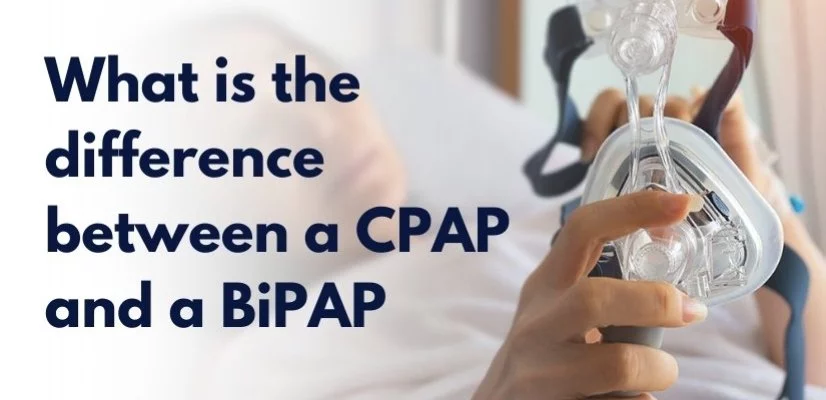CPAP vs. BiPAP are among the most popular treatments for sleep apnea. If you’re a Sleep apnea patient then your medical advisor must have discussed one or both of these treatments with you at some point. Most Sleep apnea patients wonder which one of these treatments is better for them. Let’s discuss the differences between both these treatments in depth.
What is a CPAP device?
CPAP stands for Continuous Positive Positive Airway Airway Pressure. It is the most commonly practiced treatment for obstructive sleep apnea (OSA). It works by delivering air pressure generated by a machine through a tube into a mask worn over the nose or mouth.
How does a CPAP machine work?
A CPAP machine is a device that uses air pressure to keep the airway open by delivering it through the nose into the back of the throat. The pressure can be changed. There are numerous ways to change the way air is delivered in order to maintain the airway open when sleeping.
Who uses a CPAP machine?
CPAP vs. BiPAP
People who have serious breathing issues while sleeping use CPAP therapy. Doctors most commonly prescribe CPAP as a sleep apnea treatment for people who experience obstructive sleep apnea, a condition that causes insufficient oxygen intake during sleep. Medical professionals also use CPAP therapy for both infants and adults. In the case of infants with underdeveloped lungs, they receive CPAP therapy that involves blowing air into their lungs.
What is a BiPAP device?
BiPAP stands for Bilevel or two-level Positive Airway Pressure. This sleep apnea treatment, like CPAP, operates by forcing air through a tube into a mask worn over the nose. While CPAP usually only provides single pressure, BiPAP provides two: an inhale and an exhale pressure. Inhalation-positive airway pressure (IPAP) and exhalation-positive airway pressure (EPAP).
How does a BiPAP device work?
Most BiPAP equipment has two settings and monitors the effort required to inhale and exhale. If the person sleeping stops breathing for a predetermined amount of time, the BiPAP device can deliver a breath. The minimum breath rate, also known as the ‘backup rate,’ specifies a minimum number of breaths per minute (BPM). This option instructs the patient to take a specific number of breaths per minute.
Who uses a BiPAP machine?
People frequently use this sleep apnea treatment for additional breathing support. Doctors usually prescribe this therapy for patients with congestive heart failure/coronary artery disease or pulmonary or neurologic medical conditions. Patients with neuromuscular issues may potentially benefit from a BiPAP device’s pressure differential.
Which one is better for me CPAP or BiPAP?
Typically, doctors treat the most common form of obstructive sleep apnea using CPAP or AutoCPAP, while they treat central sleep apnea, characterized by breathing pauses without airway obstruction, using Bilevel, also known as BiPAP.
Central sleep apnea is identified as a part of a sleep study. People who have experienced heart failure, or a stroke, or who take narcotic pain drugs on a regular basis are more likely to develop this condition. CPAP itself can also cause it, but it only occurs once or twice after the first few months of use.
Disclaimer
The information provided is for general knowledge only. Consult your doctor for personalized advice and treatment. Medikart HealthCare is not liable for any actions taken based on this info.

